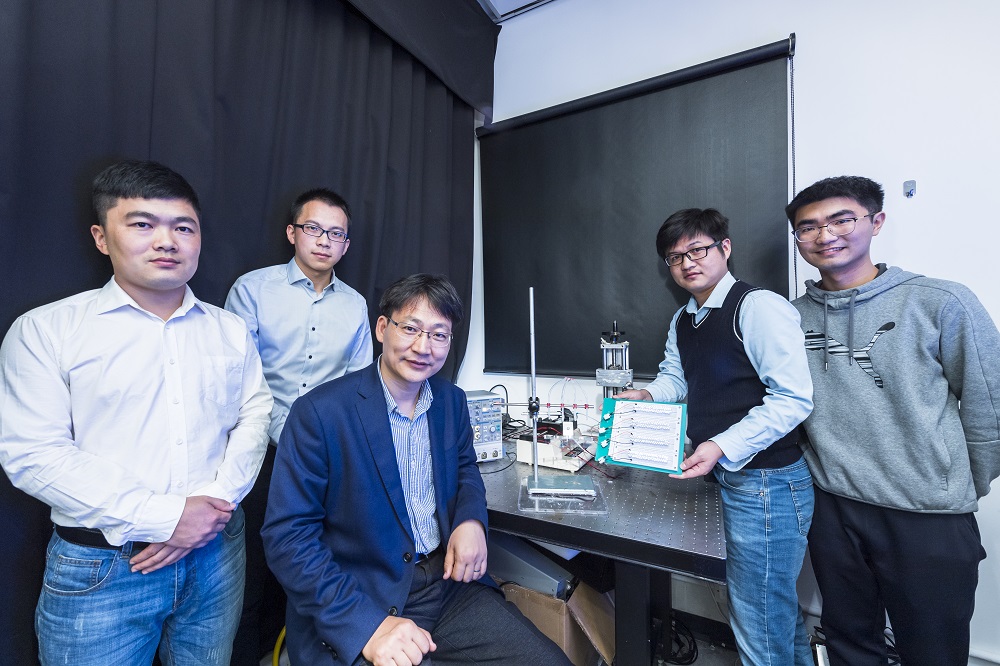Harvesting Water Droplets for Sustainable Energy
Energy needs have skyrocketed in the past two centuries or more. The main energy sources, fossil fuels, are not only polluting, but also finite. Developing sustainable energy sources has long been a key global challenge. Professor Wang Zuankai, Associate Dean (Internationalisation and Industry Engagement) in the College of Engineering and Professor in the Department of Mechanical Engineering, has achieved research breakthroughs in efficiently converting the kinetic energy in water droplets into electrical energy, advancing research in water-based energy harvesting.
“Harvesting water energy can help solve the global problem of renewable energy shortage,” said Professor Wang. “Although droplets are small and ordinary, their power and impact can be large and far-reaching if we can efficiently harvest the kinetic energy from falling droplets.” His distinguished research on water energy harvesting earned him the 2020 Xplorer Prize presented by the Tencent Foundation.
Droplet-based electricity generator with transistor-like structure
The conventional droplet-based electricity generator (DEG) is based on the triboelectric effect – a type of contact electrification in which two materials, a droplet and a surface, contact and separate. However, the electrical energy generated through it is limited to the amount of charges generated on the surface. Hence, the energy conversion efficiency is relatively low.
To enhance the energy conversion efficiency of the DEG, Professor Wang proposed a design similar to a field effect transistor, which includes two electrodes, one of which is deposited with polytetrafluoroethylene (PTFE), an electret material with a quasi-permanent electric charge. When the water droplets continuously hit the PTFE surface, the surface charges generated accumulate and gradually reach saturation. This helps to overcome the bottleneck of low charge density encountered in conventional generators.

A drop of water could light up 100 LED bulbs
More importantly, the two electrodes play a role similar to that of a field effect transistor. When a water droplet hits and spreads on the surface, it “bridges” the aluminium electrode and the PTFE/ indium tin oxide (ITO) electrode, forming a closed-loop circuit. All the stored charges on the PTFE are then fully released and generate an electric current. This phenomenon contributes to the remarkably high instantaneous power density and energy conversion efficiency.

In collaboration with Professor Zeng Xiao Cheng, from the University of Nebraska-Lincoln, and Professor Wang Zhong Lin, Founding Director and Chief Scientist at the Beijing Institute of Nanoenergy and Nanosystems of the Chinese Academy of Sciences, the DEG developed by Professor Wang showed instantaneous power density of up to 50.1 W/m2 in experiments, thousands of times higher than that of similar devices without the FET-like design. In their experiments, a drop of 100 microlitres of water released from a height of 15 cm generated a voltage of over 140V, which could light up 100 small LED light bulbs. Their DEG findings were published in Nature in 2020.
A specialist in nature-inspired engineering
In his research, Professor Wang loves to get inspiration from nature, which has all the characteristics that scientists and engineers dream of including in their technologies: it is adaptive, dynamic, multi-functional, energy efficient and interconnected.
One breakthrough piece of research conducted by Professor Wang and his team relating to nature-inspired engineering involves shaping drops of liquid in such a way that they can shed from a surface faster, thus creating super dry surfaces. Potential applications include preventing ice from forming on metal surfaces, like aircraft wings and engines.
In another inspiration from nature, Professor Wang worked together with Dr Shen Yajing from the Department of Biomedical Engineering to develop a tiny, soft robot with caterpillar-like legs, which is capable of carrying heavy loads and adaptable to adverse environments, and can be used for the accurate delivery of drugs into the human body.
“Through billion years of evolution, nature has developed extraordinary principles, which are characterised by green energy and resilience, such as how lotus leaves repel water and how certain beetles in the desert gain access to water. We can always look to principles in nature for inspiration in developing technologies,” said Professor Wang. “It will never disappoint us.”
This research article originated from CityU RESEARCH.